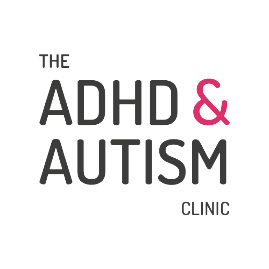Navigating the Spectrum of Attention Deficit Hyperactivity Disorder
There are 3 types of ADHD in adults: inattentive, hyperactive-impulsive, and combined. Each comes with distinct challenges. Tailored coping strategies are crucial, and seeking professional help for diagnosis and personalised treatment is key for effective management. Understanding these nuances is essential for improving the quality of life in adults with ADHD.
Introduction
Attention Deficit Hyperactivity Disorder (ADHD) is a neurodevelopmental condition which affects attention, impulse control, and motor activity. The effect of ADHD on executive function is particularly challenging for adults with ADHD. There are three types of ADHD.
Types of ADHD in Adults
Adult ADHD manifests in three primary types:
- predominantly inattentive
- predominantly hyperactive
- combined presentation
ADHD: predominantly inattentive type
The predominantly inattentive type of Attention Deficit Hyperactivity Disorder (ADHD) is characterised by symptoms primarily related to inattention. People with this type of ADHD may exhibit difficulties in maintaining attention, being easily distracted, and organising tasks. They may also struggle with completing tasks, following instructions, and sustaining mental effort.
People with predominantly inattentive ADHD may appear forgetful and may have trouble with time management and organisation. A lack of significant hyperactive or impulsive symptoms distinguishes this subtype of ADHD.
ADHD: predominantly hyperactive type
The predominantly hyperactive-impulsive type of Attention Deficit Hyperactivity Disorder (ADHD) is characterised by symptoms primarily related to hyperactivity and impulsivity. People with this type of ADHD may display excessive levels of physical activity, restlessness, and an inability to stay seated in situations where it is expected.
They may also manifest impulsive behaviours, such as acting without considering the consequences, interrupting others, and having difficulty waiting their turn. This subtype of ADHD is distinguished by a lack of significant inattention symptoms.
ADHD: combined type
The combined type of Attention Deficit Hyperactivity Disorder (ADHD) is characterised by symptoms related to both inattention and hyperactivity-impulsivity. People with this type of ADHD may exhibit a combination of difficulties in maintaining attention, being easily distracted, organising tasks, and displaying excessive levels of physical activity, restlessness, and impulsivity.
They may struggle with completing tasks, following instructions, and controlling impulses. This subtype of ADHD is distinguished by the presence of significant symptoms from both the inattentive and hyperactive-impulsive categories.
Living with Adult ADHD: Strategies and Coping Mechanisms
Coping with adult ADHD involves implementing personalised strategies based on the specific type or combination of symptoms. General strategies include creating structured routines, utilising organisational tools, and seeking professional guidance. Lifestyle adjustments, such as regular exercise and stress management techniques, complement treatment efforts and enhance overall well-being.
Seeking Help: Diagnosis and Treatment Options
ADHD symptoms in adults are not uncommon. ADHD diagnosis requires a comprehensive ADHD assessment by a competent practitioner. An ADHD diagnosis is usually made by a psychiatrist or a psychologist, although in some cases, other healthcare practitioners may be involved in the assessment process.
What are the ADHD treatment options? Treatment options include medication, ADHD coaching, psychological interventions, and advice for lifestyle modifications to address specific challenges. Although there is increasing awareness of ADHD, ADHD awareness remains a challenge in some settings. Coping with adult ADHD often requires others to understand ADHD and for schools, colleges, universities, employers, and other organisations to consider reasonable adjustments and to play their part.
The Importance of ADHD Awareness
Raising awareness about ADHD is essential for promoting understanding, acceptance, and access to support services. Fortunately, there are organisations which champion the needs of adults with ADHD. However, educating the public, healthcare professionals, and policymakers about ADHD symptoms, diagnosis, is needed to reduce stigma and to foster greater ADHD awareness and supportive environments for adults with ADHD.
Conclusion: Types of ADHD in Adults
Understanding the three types of ADHD in adults is essential for recognising individual differences and tailoring interventions accordingly. By embracing personalised strategies and seeking professional support, individuals with ADHD can navigate life’s challenges with resilience and empowerment.
Are you seeking an ADHD assessment?
Are you ready to find out more? Contact The ADHD and Autism Clinic to discuss assessment and treatment options. Whether seeking a diagnosis, exploring treatment options, or seeking specialised care, we are here.

